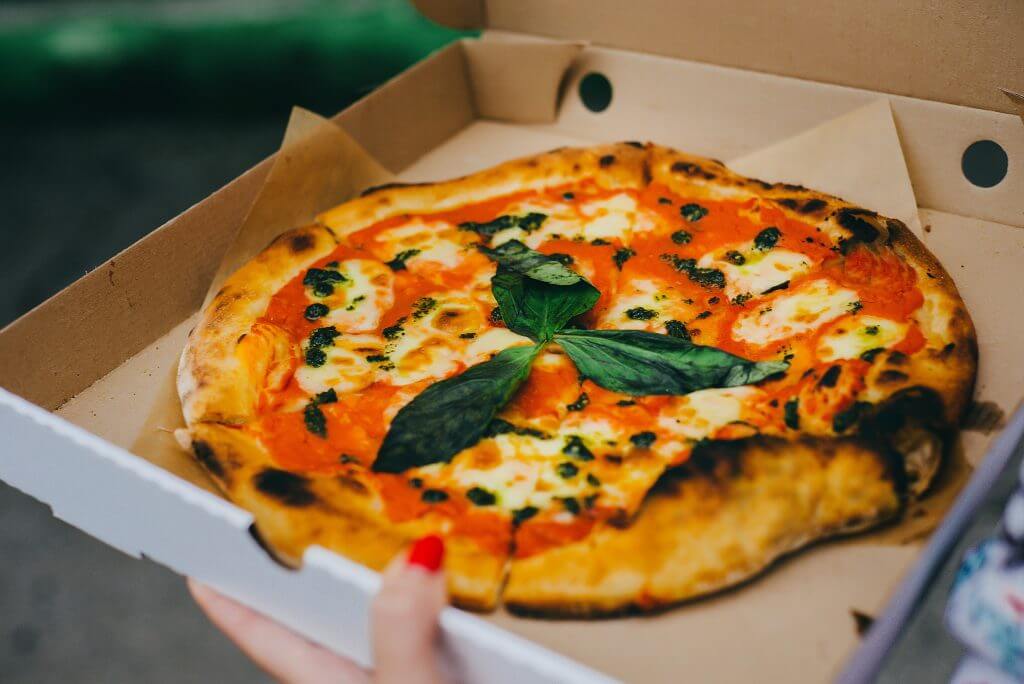
Photo by Alexandra Gorn on Unsplash
Three weeks ago. It’s Friday night. We’re in a lazy mood so we hop in the car and go to the new neighborhood pizza place, Aviator Pizza. It’s our second time to go and it’s even busier than the first time, which is a good sign. The burger joint that occupied this space prior to Aviator didn’t last long.
Seems like blue skies are ahead for Aviator.
We order at the bar and find an open table to wait for our food and I spot the sign next to the side door. Written on a small chalkboard, “Grand Opening – March 4th.”
Since I started working in the Agile industry, I’ve started to see Agile and Lean thinking outside software development. Apparently, work followed me to pizza night.
Soft Opening Pizza Release
A soft opening is the Agile equivalent of a minimum valuable product. After we got our calzone, roasted garlic pizza, and salad (all three delicious, holy moly the sweet garlic), the manager came by and asked how everything was. She asked about the food, the service, and if we liked what we were eating. She then moved to the next table and chatted with more customers. By asking how everyone was doing during the soft opening, she was gathering data to fix problems and iterate for the grand opening.
There is a lot of risk involved in a grand opening. Everyone is invited, advertising may be involved, and media may be present. It’s a lot of pressure for restaurants to get it right the first time. Soft openings provide slack for the restaurant to learn by limiting the scope of release. For example, the restaurant may only be open to friends and family or they may limit the menu. Soft openings give time for staff to learn the menu, the kitchen, and where items are on the Point-of-Sale computers. Managers and chefs are also given time to make staffing decisions, analyze pricing, and finalize the menu.
Black Sheep, an American pub, also had a soft launch when they came onto the South Lamar scene May 15, 2009. Rather than waiting for their liquor license, they did a soft launch to introduce themselves to the community and debut their concept.
“We needed to get revenue generated,” Sarah Miller, Director of Special Events and Marketing at Black Sheep Lodge said. “We also felt that opening and giving away free booze was a powerful marketing tool to use to endear us to the neighborhood.”
For two months, they allowed patrons to bring their own alcoholic beverage while they served free keg beer and margaritas. Black Sheep now has a sister bar in Austin and also another location in Dallas.
Limited Shrimps In Progress
Agile and Lean thinking isn’t only found in soft openings and fine dining – take Joe’s Crab Shack. Instead of lobster on fine china, when you visit Joe’s Crab Shack you get crabs in buckets. Tie-dye is the official uniform, not white coat and tails. It’s the type of place where servers stop what they’re doing to do the cabbage patch in the aisles. But what if there was a good operational reason for the goofy dancing?
Joe’s Crab Shack limits their work in progress in a very creative and entertaining way. If the kitchen starts to get behind, the manager will flip on the disco lights and servers will start to dance to top 40 hits. While they are entertaining the guests, time spent dancing to “At the Car Wash” gives the kitchen time to catch up without more orders coming in, effectively clearing and cleaning out their value stream.
Testing On Wheels
If I sell this food, will people pay to eat? Opening a restaurant, even with soft launches, is a really big investment. Food carts and food trucks allow people to test their idea at a much smaller scale. With a restaurant, you’re talking about renting or buying real estate, decorating, and hiring a staff in addition to buying the ingredients. With a food truck, all you need is the small kitchen, the cook, and one person taking orders. It’s a much leaner business model that still tests the same hypothesis.
If the food truck is a success, opening a brick and mortar is a much safer investment because the concept has already been proven. Alos, think about the food truck as an iteration on wheels, a mobile restaurant MVP. Owners have a chance of validating their concept earlier and the bonus of recouping that investment and making a profit. East Side King started out as a truck in the East Side. There is now one brick and mortar on South Lamar and one spinoff. Torchy’s Tacos also started as a humble food truck in Austin but has now grown to 14 locations in Texas, Colorado, and Oklahoma.
Another food truck bonus: The ability to test and iterate location. If one spot doesn’t work, drive somewhere else.
Agile and lean thinking is everywhere, in the software you build and the restaurant in which you dine. All you have to do is open your minds and dig in.



